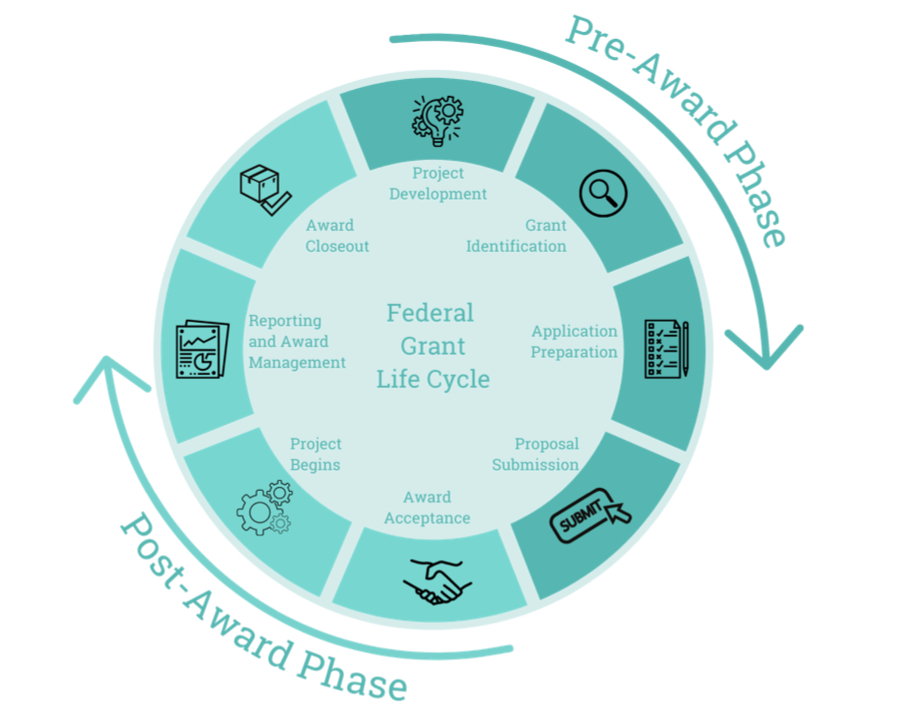Grants 101:
The Grant Life Cycle
This article provides a breakdown of the federal funding timeline and process, from start to finish, to help guide you in preparing to apply and implement awarded competitive funding.

The grant life cycle is fundamental to understanding nuances of the federal grant application and award processes.
Federal grant programs are analogous to a life cycle in that once these programs open, grants are frequently re-administered annually over a specified number of years.
The pre and post-award phases recur on an annual, or cyclical, basis until the total program funding has been administered. The length of a federal program is largely determined by the total designated funding and the number of awards administered per year. Once funding has been fully administered the program, and funding cycle, ends.
Each year a federal grant program is offered, the pre-award phase provides applicants the opportunity to identify if they are a viable candidate for that program based on their funding needs for current projects and eligibility, time to generate a proposal, and a deadline to submit. If a proposal is selected after the corresponding issuing agency reviews the application, the post-award phase is in place until the allocated funding is implemented and the accepted timeline is complete.
The pre and post-award phases are outlined in detail below.

Pre-Award Phase
1 Project Development:
Prospective applications determine internally which program or initiative requires federal funding, and what aspect of the project would generate a competitive application when submitted.
2 Grant Identification:
When the need is determined and initial project developments in place, applicants begin identifying relevant opportunities through government or federal agency websites.
3 Application Preparation:
After a federal grant program is determined, applicants must ensure they are compliant with the requirements of the grant and generate a complete and competitive proposal.
4 Proposal Submission:
Applicants must submit the completed proposal by the designated deadline in order to be eligible for review.

In between the two phases is a brief period for the issuing agency to review and determine which applications will receive the award. Sometimes the grant life cycle is described as having three phases, with this period of review called the “Award Phase.”
Post Award Phase
1 Award Acceptance:
Upon winning an award, the awardee will receive the allocated funding according to the timeline outlined in the NOFO and application.
2 Project Commencement:
The implementation of federal funding begins and the project timeline starts.
3 Reporting and Award Management:
With each grant, there are reporting requirements designed to ensure that awarded funding is being maintained within the scope of the project. Therefore certain aspects of how the funding is being used will be submitted back to the issuing agency to determine the impact and progress of the project.
4 Award closeout:
Once the designated timeline has ended and corresponding funding allocated, awardees submit final reporting of the funding, and complete the cycle. Applicants can reapply for the same grant as a reapplicant if allowed by the program and total funding is still available.


